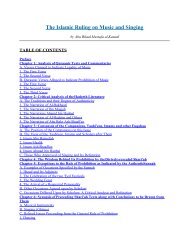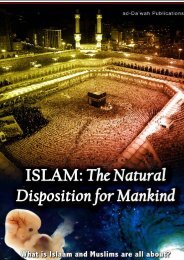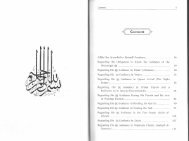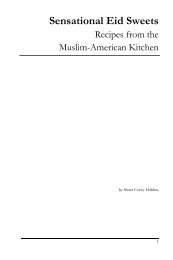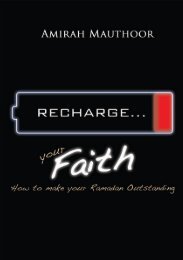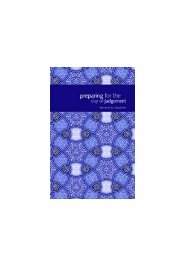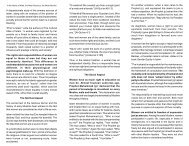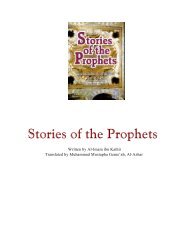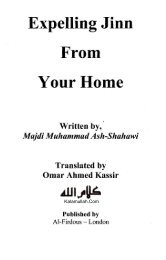Evolution of Fiqh - Mission Islam
Evolution of Fiqh - Mission Islam
Evolution of Fiqh - Mission Islam
- No tags were found...
Create successful ePaper yourself
Turn your PDF publications into a flip-book with our unique Google optimized e-Paper software.
Qabeelat Tayybah This is because there were fabricated Hadeeth in the area and they would rule out Hadeethwhich did not make sense to them. They would be suspicious <strong>of</strong> narrations and would doubt the trustworthiness <strong>of</strong> people because<strong>of</strong> the historical factors and political instability such as sectarianism and factionalism, in thearea. Nowadays, even this school says that you do not try to reason the Hadeeth after thecompilation <strong>of</strong> the Sahih books; you cannot criticize any Hadeeth based on this method.o They are known as the “The Rational School <strong>of</strong> Thought” in light <strong>of</strong> their rational thinking.3. Fuqaha’ <strong>of</strong> the Madhab:In the city <strong>of</strong> al-Kufaa. ‘Alqamah ibn Qays an-Nakhai’ee He was the student <strong>of</strong> ‘Abdullah ibn Mas’ood who was the student <strong>of</strong> ‘Umar.b. Ibrahim ibn Zaid an-Nakhai’ee He was the cousin <strong>of</strong> Alqamah. From ‘Alqamah and Ibrahim came Hammad ibn Sulaiman who was the teacher <strong>of</strong> Abu Haneefa.In the city <strong>of</strong> al-Basrac. Al-Hasan al-Basri He was raised in the household <strong>of</strong> Umm Salamah, the wife <strong>of</strong> RasulAllah sal Allahu alayhi waSallam. He became one <strong>of</strong> the main authorities on <strong>Islam</strong>ic law and is considered one <strong>of</strong> the 13 imaams <strong>of</strong><strong>Fiqh</strong>. He died in 110 Hijri.d. Rabi’ah ibn Abi ‘Abdur Rahman He was the teacher <strong>of</strong> Imam Malik. He was called Rabi’ah ar-Ra’i because <strong>of</strong> his extensive use <strong>of</strong> reasoning. The reasons for Differences: What went wrong?o Geographical separation created isolation and the development <strong>of</strong> different cultures.o Political environment for each region; in Iraq there was mostly turmoil while Madinah was peaceful.The ‘ulema’ in Iraq were forced to depend on reason. As for Hijaz, it was stable and safe.o Cultural influences: In Hijaz, there were no adjacent cultures to influence Madinah. The Sahabah andthe Bedouins used to just listen to and obey The Prophet (Peace Be Upon Him). In Iraq, there was ahuge influence from the east; namely Persians, who brought with them their philosophy and their culture<strong>of</strong> questioning and using reason. The non-Arab converts had a lot <strong>of</strong> questions and the ‘ulema’ andfuqaha’ in Iraq couldn’t wait for ahadeeth to come from Madinah so they started to use their ownreasoning. The Sahabah also used qiyas and ijtihad but Ahl al-Iraq gave these sources a higher statusthan the Sahabah did. Sources <strong>of</strong> Legislation in this Period1. Qur’an2. SunnahTCE Notes Revolution 48




